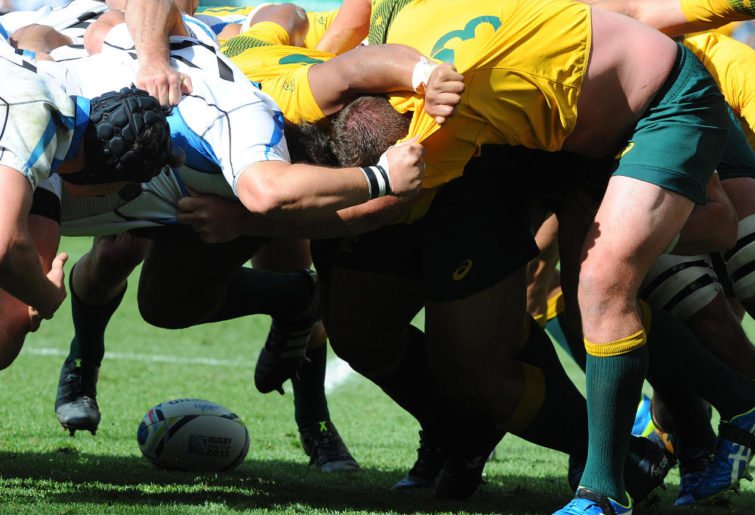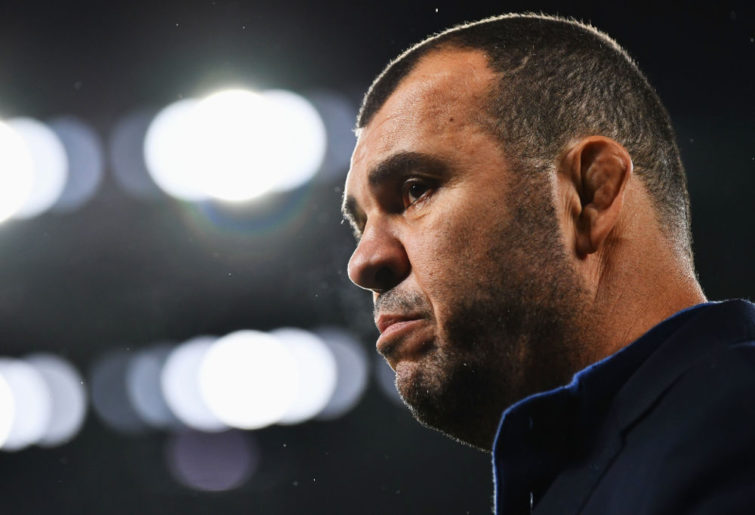Between now and the Wallabies’ first game of the Rugby World Cup – against Fiji in Sapporo on September 21 – they have three games to establish not just who will make the cut for the 31-man squad for Japan, but all the combinations and a first XV within it.
That’s 240 minutes of rugby to get everything sorted.
In all seriousness, from the first two games of The Rugby Championship, it’s so hard to put into words how big a task this is for the Wallabies.
Those two performances – an underwhelming loss in Johannesburg to South Africa, and a much-improved win over Argentina in Brisbane – were literally poles apart, both in terms of quality and the teams that took the field.
Two hundred and forty minutes.
Of course, the Wallabies were in exactly this same situation in 2015, and it actually ended rather well.
From the side that beat South Africa 24-20 in Brisbane to kick off the RWC preparations in earnest, ten of the starters were also in place for the RWC final against New Zealand at Twickenham a couple of months later. Another three who came off the bench in Brisbane would be in the starting side at Twickers in the decider.
In total, 18 of the 23 who took the field in the first Test of 2015 were still there by the end of the World Cup.
Anyone who’s read or listened to even a little bit of former Wallabies prop turned Gain Line Analytics founder Ben Darwin’s theory around the importance of cohesion within rugby and all team sports will quickly join those dots. That continuity at the selection table saw the Wallabies win ten of 12 games in 2015, and all but the one that counted the most at the RWC.

The Wallabies flourished at the 2015 World Cup. (AP Photo/Rui Vieira)
And the continuity started quite early in the piece, too.
From the Brisbane win over the Springboks, Wallabies coach Michael Cheika made seven changes to the starting side, and another six changes to the bench for the side that then beat Argentina in Mendoza.
Matt Toomua came into the starting side for Matt Giteau at inside centre, Joe Tomane for Rob Horne on the left wing, Bernard Foley and Nick Phipps for Quade Cooper and Will Genia in the halves. The front row remained the same, and lock Rob Simmons and back-rower Scott Fardy backed up from the Brisbane win, while only Tatafu Polota-Nau and Scott Sio wore the same bench jerseys in consecutive games. Thirteen changes in all.
But come the first Bledisloe Test of 2015 back in Sydney, and though Cheika made another 12 personnel and positional changes to the side that beat Argentina, the side that beat the All Blacks 27-19 contained 18 of the 23 that had won in Brisbane a few weeks earlier.
Twelve of the Sydney Bledisloe starting XV started the RWC final in exactly the same jersey number. So did six of the bench. Giteau and Drew Mitchell started in the No.12 and No.11 jerseys with the ink barely dry on the new overseas eligibility policy. Fardy, Michael Hooper and David Pocock were together as a 6-7-8 unit.
Sekope Kepu, Stephen Moore and Scott Sio played the first of seven of the next ten Tests as a front row trio, and Polota-Nau, James Slipper, and Greg Holmes mirrored this, coming off the bench in the same Tests that Kepu, Moore, and Sio started.
By just the third Test of the year, the front and back rows, the back five and Bernard Foley were all in place, as was much of the bench.
And from there, it was just about getting game time into players around the fringe.
So Henry Speight, Toomua, Cooper, Nic White and Wycliff Palu came in for the second Bledisloe, and Kane Douglas came onto the bench. Sean McMahon and Ben McCalman started against the USA in Chicago.
Come the RWC, it was really only the Uruguay game that the first XV sat out, and with injuries the only reason regular starting players didn’t play. Hooper missed the Wales game, while Folau and Pocock missed the quarter-final against Scotland. Sio missed the semi against Argentina.
But everyone was back for the final. I’ll say it again: 18 of the 23 who took the field in the first Test of 2015 were also there for the Rugby World Cup final.
Now, that’s all ancient history, obviously, but it’s history worth looking at again because it’s a perfect antithesis of the current selection riddle that faces Cheika and his panel colleagues, Scott Johnson and Michael O’Connor.

Michael Cheika has a selection headache. (Photo by Dan Mullan/Getty Images)
After that underwhelming loss to South Africa in Johannesburg to kick off the 2019 campaign, the selectors made 12 changes for the next Test – the much-improved win over Argentina in Brisbane.
Only the centre pairing of Samu Kerevi and Tevita Kuridrani, the back-row unit of Isi Naisarani, Hooper and Lukhan Salakaia-Loto, and the lock pairing of Rory Arnold and Izack Rodda remained the following week.
The Wallabies won, of course, but was it because of the much-improved performance, or was it the 12 changes? How can you possibly tell, subjectively or evidently?
I don’t think the Wallabies can use the 2015 continuity model in 2019, because the first XV is nowhere near as clear cut. In 2015, the team that played the first Test of the year loaded up again for the first Bledisloe Test, and were pretty obviously the best combination.
But how many of the Johannesburg team are in the first XV? How many from Brisbane? How many in the first XV haven’t played yet?
This all means that this week in Perth, the Wallabies will have to balance the need to end the Bledisloe drought with the need to experiment further, bed down combinations and hope that the first XV becomes clearer.
And that will be interesting, because only the centres, locks, and the Brumbies front row are obvious picks to me.
The back three, the halves, the back row, and pretty much the whole bench are just balls spinning around the bingo basket right now.
And when you consider all that, 240 minutes really isn’t much time at all.






























































































